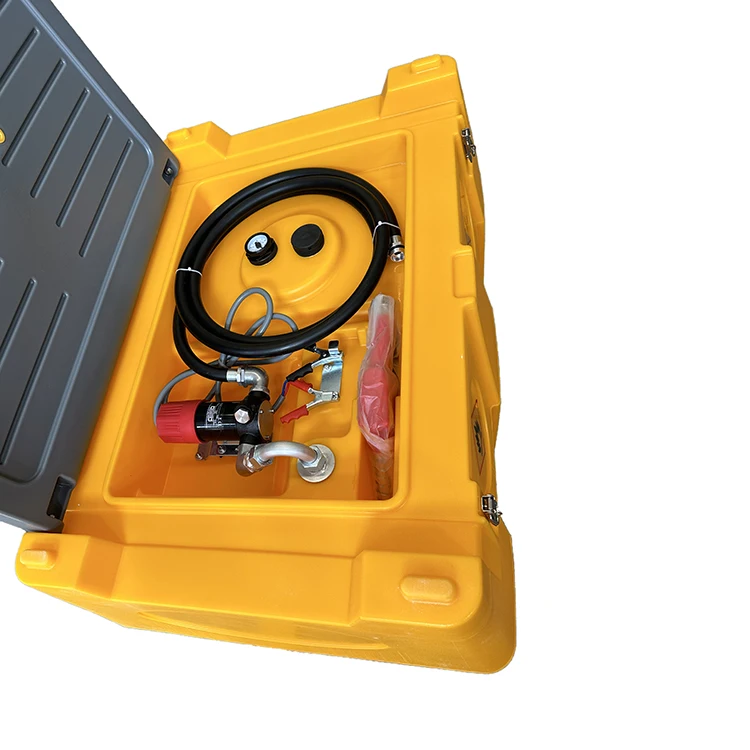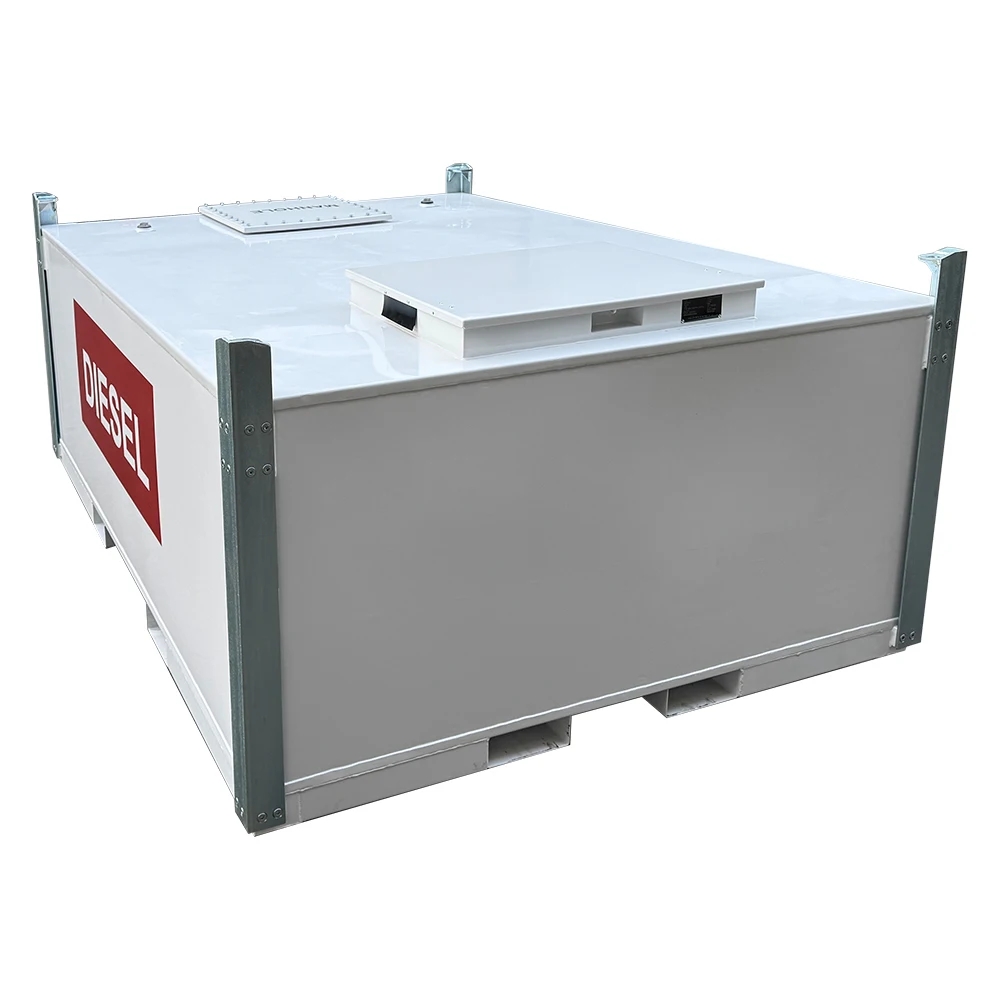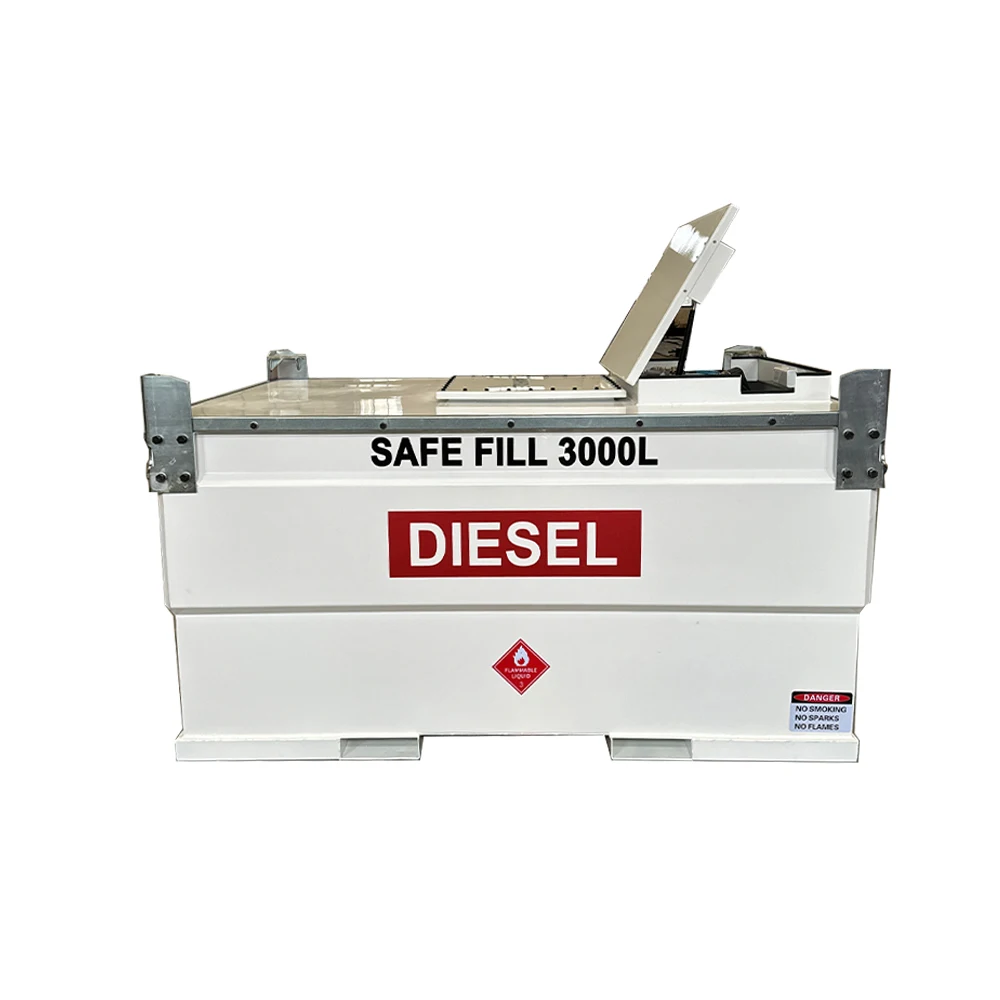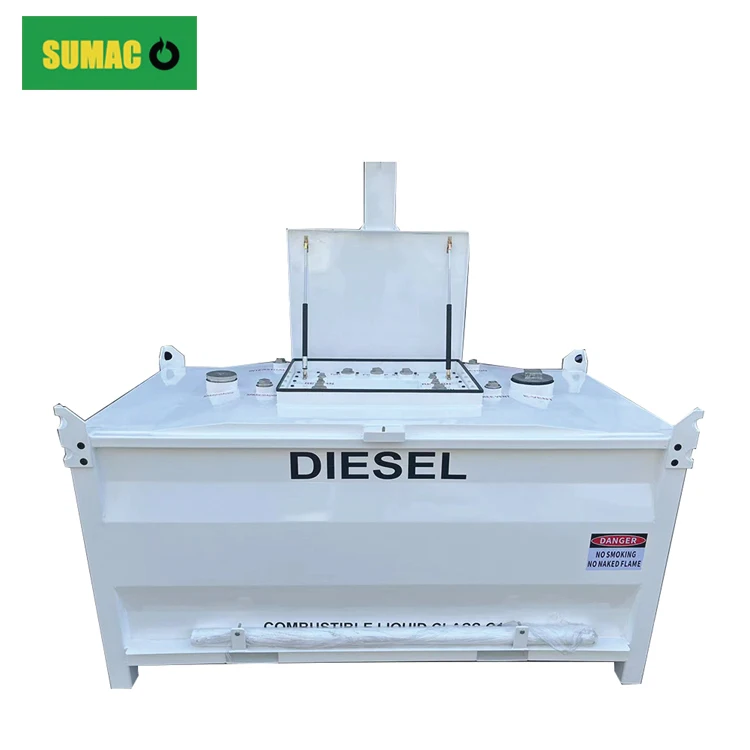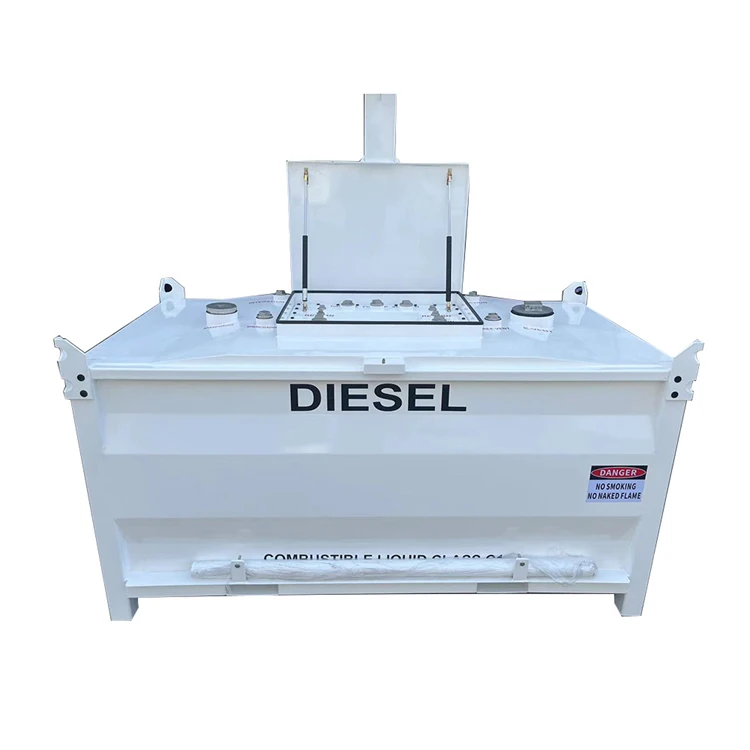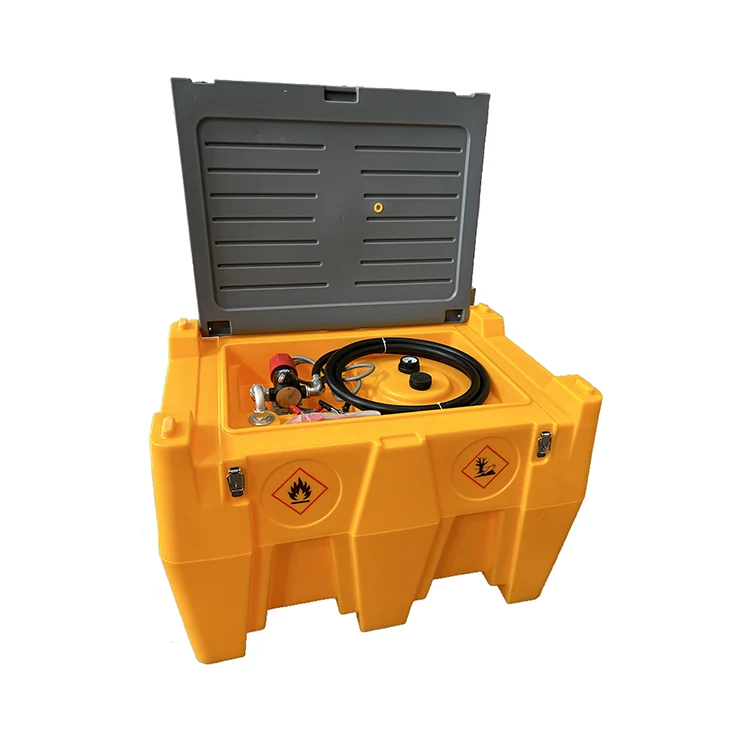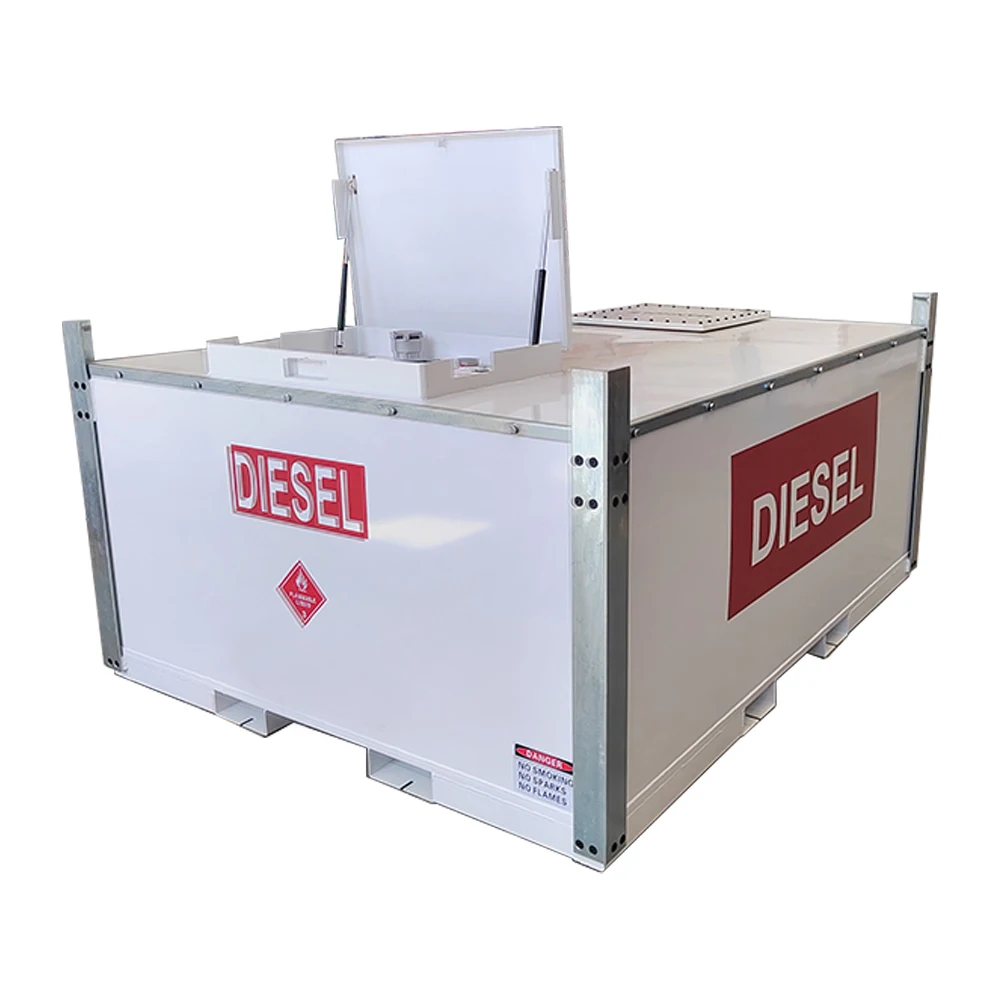1000L Fuel Cube Tank UL CUL UN Certificate Sale for Canada
Improving the storage efficiency of the fuel cube tank can be done by optimizing the use of the tank, improving the management process, and using technical means.
1. Reasonable planning of oil storage
According to the frequency of use and demand of different fuels, the storage location in the tank should be reasonably arranged. Place the commonly used fuel near the oil outlet to reduce the pipeline loss and time cost when extracting the fuel
2. Optimize the oil inlet and outlet process
Upgrade the oil inlet and outlet equipment and use large-diameter, high-flow-rate pipes and oil pumps. Large-diameter pipes can reduce the flow resistance of fuel, and high-flow-rate oil pumps can speed up the oil inlet and outlet. When inletting oil, by accurately controlling the oil inlet flow and pressure, the risk of overflow due to excessive flow rate can be avoided, and the oil tank can be filled efficiently. When discharging oil, fast oil discharge can meet the emergency oil demand of the equipment, reduce waiting time, and improve fuel turnover efficiency.
3. With the help of information management
Install a liquid level monitoring system to grasp the fuel level height in the tank in real time. By transmitting the liquid level data to the monitoring terminal through the sensor, the management personnel can understand the changes in the oil volume at any time, accurately arrange the fuel replenishment plan, prevent the fuel from running out and affecting the use, and avoid excessive storage causing idle resources. At the same time, the information system is used to record the time and quantity of each oil in and out, analyze the fuel usage rules, provide data support for subsequent reasonable reserves, and improve the scientificity and efficiency of fuel storage management.
4. Improve tank insulation and protection
Insulate the fuel tank, especially in an environment with large temperature changes. Suitable insulation materials can reduce the volume change and evaporation loss of fuel caused by temperature fluctuations, and ensure the stability of fuel quality. In addition, strengthen the protection of the tank to prevent external factors such as collision and corrosion from affecting the performance of the tank, reduce storage interruptions caused by tank maintenance, etc., and ensure that fuel storage work continues to be carried out efficiently.
https://www.sumachine.com/
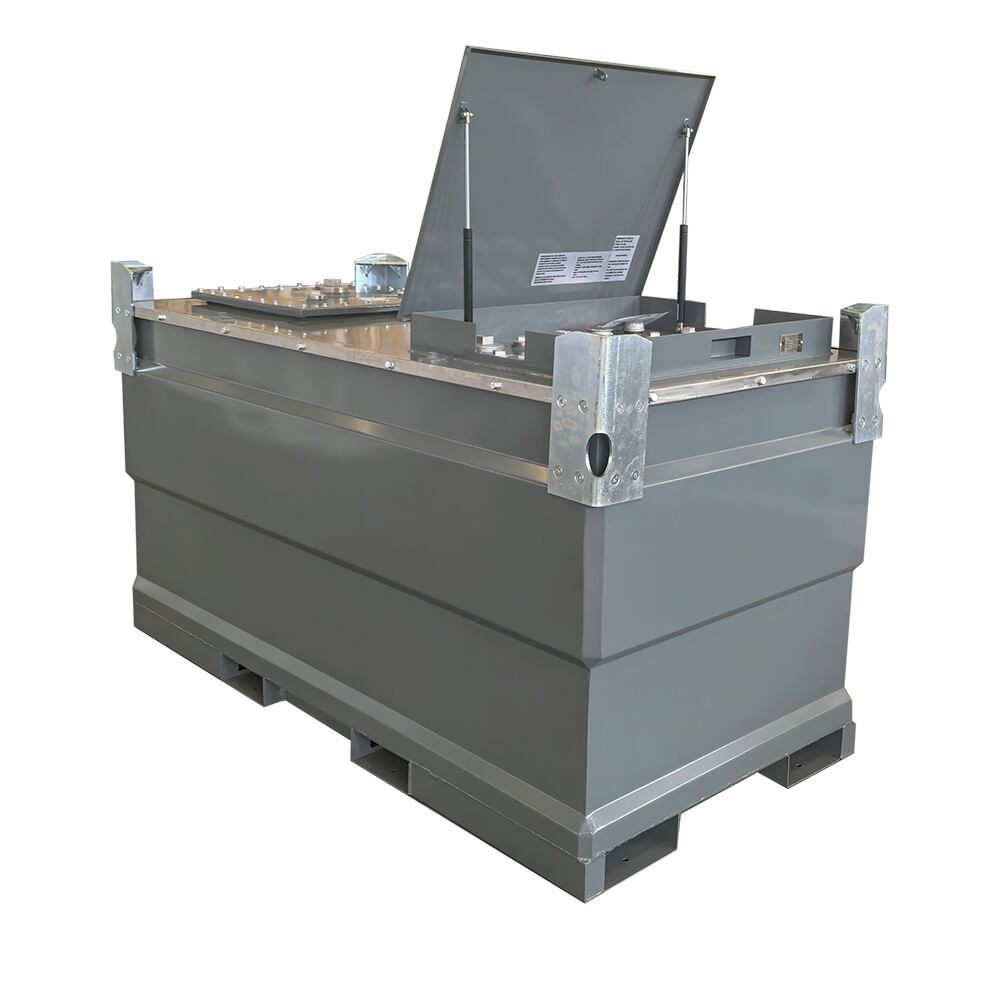
Recommended Products
Hot News
-
Double wall portable diesel gasoline cube tank with pump sale for Mauritius
2024-11-11
-
Double Walled Portable Fuel TransferCube Tank Ship To Spain
2024-11-07
-
Shipping of portable aviation fuel tank with pump
2024-10-12
-
Carbon steel diesel fuel cube tank ship to USA
2024-11-14
-
Carbon steel cube tank with pump
2024-11-13
-
Fuel Transfer Tank Cube Stationary Double Walled Diesel Storage Tank Sale For Spain
2024-11-06
-
251 US Gallon 552 Gallon Fuel Cube Transfer Tank Sale For USA
2024-11-05
-
251-2000 Gallon Fuel Cube Transfer Tank Sale For Grenada
2024-11-01
-
552 Gallon portable fuel dispenser with tank sale for USA
2024-10-30
-
Mobile fuel tank with pump sale for Spain
2024-10-22
 EN
EN
 AR
AR
 BG
BG
 HR
HR
 CS
CS
 DA
DA
 NL
NL
 FI
FI
 FR
FR
 DE
DE
 EL
EL
 IT
IT
 JA
JA
 KO
KO
 NO
NO
 PL
PL
 PT
PT
 RO
RO
 RU
RU
 ES
ES
 SV
SV
 TL
TL
 ID
ID
 LT
LT
 SR
SR
 SK
SK
 SL
SL
 UK
UK
 VI
VI
 HU
HU
 TH
TH
 TR
TR
 MS
MS
 GA
GA
 IS
IS
 KA
KA
 HT
HT
 KK
KK
 UZ
UZ


